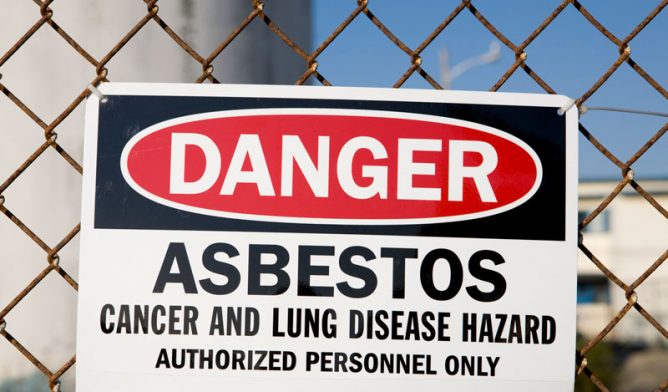Pillsbury Plant Owner Sentenced for Asbestos Violations
Asbestos Exposure & BansWritten by Tim Povtak | Edited By Walter Pacheco

Federal judge Sue Myerscough sentenced a part owner of the shuttered Pillsbury Mills complex in Springfield, Illinois, Monday to three years in prison for violating clear air standards with the illegal removal of asbestos products.
Joseph Chernis IV pleaded guilty to illegal removal, demolition and disposal of asbestos after using untrained workers to remove dry pipe insulation and store it in open containers, trash bags and cardboard boxes.
He is still facing an ongoing civil case brought by the Illinois Environmental Protection Agency (EPA).
“I have grave concerns about the damage to the community in this case,” Myerscough said during sentencing, according to The State Journal-Register.
The Pillsbury Mills plant, which closed in 2001, is not far from a local high school, a park and the federal courts building in downtown Springfield.
For more than a decade, the complex has been the subject of a cleanup dispute between local authorities and different ownership groups involved in salvage operations.
Salvage Operation Breaking the Law
The Chernis family in 2014 bought the 18-acre site, which included 20 buildings and warehouses and 30 grain silos.
The original flour-milling plant opened in 1929 and became a booming Pillsbury processing and distribution factory.
Unfortunately, as it expanded, the construction was done with a wide range of asbestos products, which were popular throughout much of the 20th century.
The Chernis family had planned to sell off parcels of the land in a surplus auction, but it was blocked by contamination concerns involving asbestos.
An emergency EPA cleanup began early in 2017, following the failure of owners to meet a series of court-ordered cleanup deadlines.
The violations occurred between October 2014 and August 2015.
Under the Clean Air Act, the EPA has rules and specific regulations for removing asbestos products.
Asbestos Dangers a Serious Concern
Asbestos is a naturally occurring mineral once widely used in construction.
It was valued for its versatility and affordability, mixed with a variety of products to strengthen and fireproof almost anything.
Unfortunately, it is toxic and becomes dangerous once it ages or is disturbed. The inhalation or ingestion of microscopic asbestos fibers can lead to serious health problems, including mesothelioma, lung cancer and asbestosis.
Chernis previously confessed to obstructing justice in a separate lawsuit that accused him of lying about the asbestos removal project at the plant.
“I understand I’ve made some mistakes, some very big mistakes,” Chernis told the judge before sentencing.
EPA Cleanup Failed to Solve the Problem
Myerscough said the EPA cleanup in 2017 cost $2.5 million — not the $1.8 million reported earlier — but still didn’t solve the asbestos problem, only the airborne threat to others in the area.
She refused to lift the injunction that prevents Chernis and his partners from being at the Pillsbury site.
The EPA cleanup removed 2,200 tons of asbestos contaminated debris, but left behind harder-to-reach asbestos within the structures of the complex.
“I think it’s an overreaction,” Chernis said during an interview with the State Journal-Register. “If [the asbestos] is so dangerous, why is it not yet cleaned up? Clearly, this is about money. It’s not about cleaning the place up.”
Chernis called the EPA cleanup “a joke.”
The situation of the once-bustling Pillsbury site is similar to a problem facing many older cities today.
Laws requiring costly asbestos removal before demolition of no-longer-useful facilities often prevent new construction.
Neighbors have complained for decades about the abandoned, run-down complex, which has been vandalized repeatedly.






